Kingdom Plantae Family Ericaceae Scientific name Vaccinium myrtillus Rank Species | Order Ericales Genus Vaccinium Higher classification Blueberries | |
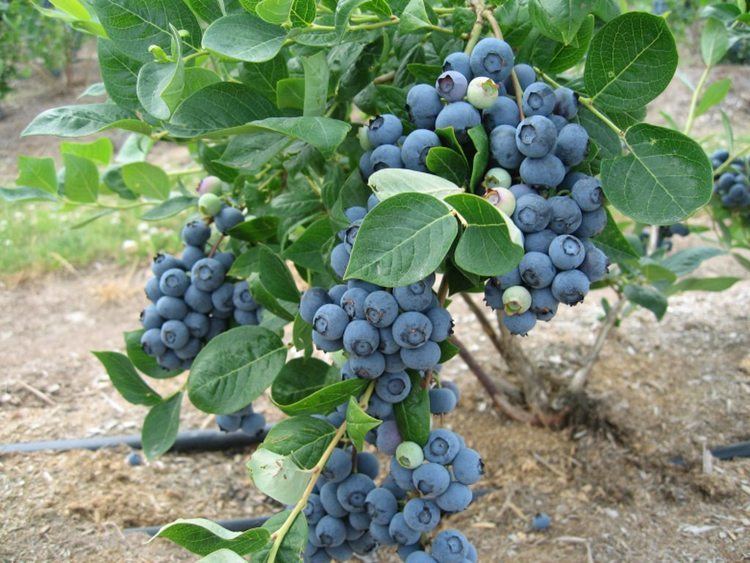 | ||
Similar Lingonberry, Red raspberry, Blackberry, Currant, Blueberries | ||
Vaccinium myrtillus is a species of shrub with edible fruit of blue color, commonly called "bilberry", "whortleberry" or European blueberry. It has much in common with the American blueberry (Vaccinium cyanococcus). It is more precisely called common bilberry or blue whortleberry, to distinguish it from other Vaccinium relatives. Regional names include blaeberry, hurtleberry, huckleberry, winberry and fraughan.
Contents
Range
Vaccinium myrtillus is found natively in Europe, northern Asia, Greenland, Western Canada, and the Western United States. It occurs in the wild on heathlands and acidic soils. Its berry has been long consumed in the Old World. It is related to the widely cultivated North American blueberry.
Fruit
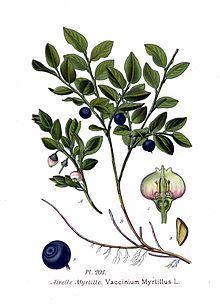
Vaccinium myrtillus has been used for nearly 1,000 years in traditional European medicine. Vaccinium myrtillus fruits have been used in the traditional Austrian medicine internally (directly or as tea or liqueur) for treatment of disorders of the gastrointestinal tract and diabetes. Herbal supplements of V. myrtillus (bilberry) on the market are used for circulatory problems, as vision aids, and to treat diarrhea and other conditions. In cooking, the bilberry fruit is commonly used for the same purposes as the American blueberry: pies, cakes, jams, muffins, cookies, sauces, syrups, juices, candies and so on.
Leaf
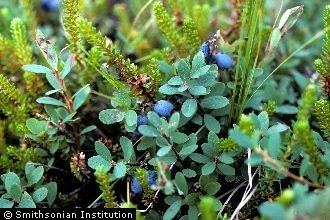
In traditional medicine, Bilberry leaf is used for different conditions, including diabetes. The United States' National Institutes of Health rates it as "possibly effective for problems with the retina of the eye in people with diabetes or high blood pressure".
Confusion between bilberries and American blueberries
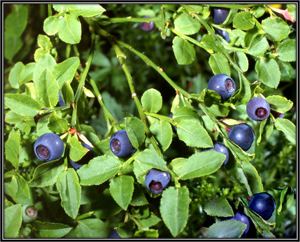
Since many people refer to "blueberries", no matter if they mean the bilberry (European blueberry) Vaccinium myrtillus or the American blueberries, there is a lot of confusion about the two closely similar fruits. One can distinguish bilberries from their American counterpart by the following differences:
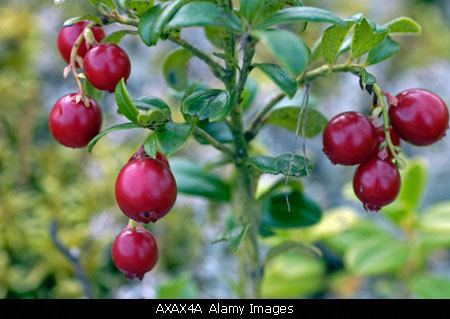
Adding to the confusion is the fact there are also wild American blueberry varieties, sold in stores mainly in the USA and Canada. These are uncommon outside of Northern America. Even more confusion is due to the huckleberry name, which originates from English dialectal names 'hurtleberry' and 'whortleberry' for the bilberry.
